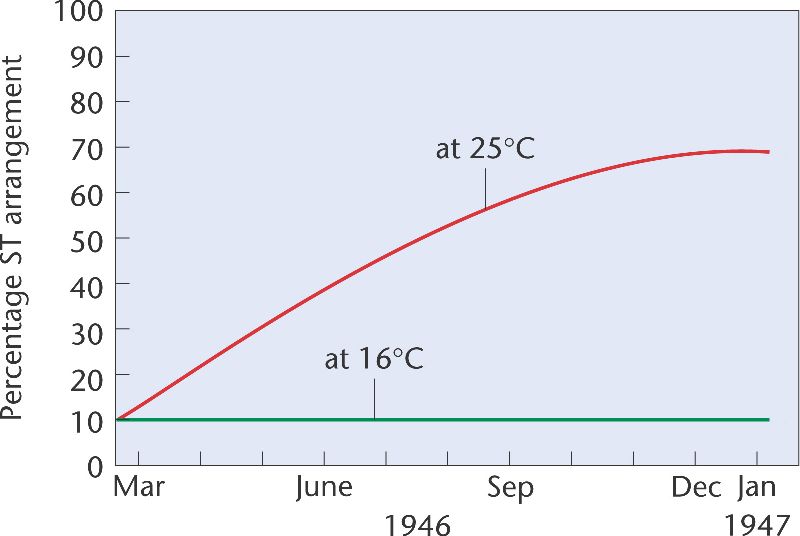
To test the hypothesis that this cyclic change is a response to natural selection, Dobzhansky and his group devised a laboratory experiment. They constructed large population cages from which samples of D. pseudoobscura could be removed periodically and studied. They began with a population that was 88 percent CH and 12 percent ST. The flies were maintained at 25°C and sampled over a 1-year period. As shown in Figure 26-6, the frequency of ST increased gradually until it was present at a level of 70 percent. At that point, an equilibrium between ST and CH was reached. When the same experiment was performed at 16°C, no change in inversion frequency occurred. The researchers concluded that the equilibrium reached at 25°C was in response to the elevated temperature, the only variable in the experiment.
Figure 26-6. Increase in the ST arrangement of D. pseudoobscura in population cages under laboratory conditions.
The results of the study indicate that a balance in the frequency of the two inversions and the gene arrangements they contain is superior to either inversion b
y itself. The equilibrium reached in the experiment presumably represents the highest mean fitness in the population under controlled laboratory conditions. This interpretation of the experiment suggests that natural selection is the driving force maintaining the diversity in chromosome 3 inversions.
